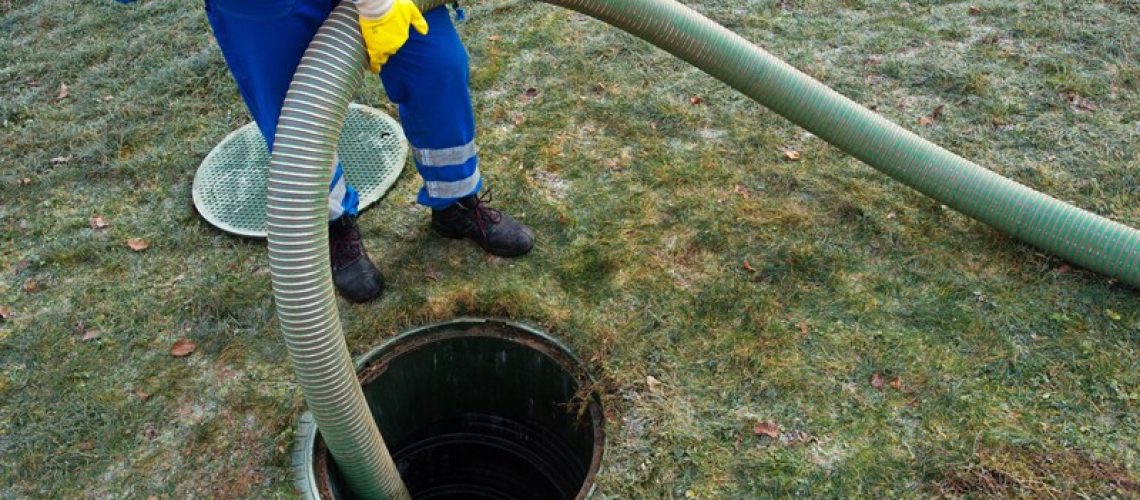A septic tank pump is a submersible pump that is situated outside the main tank or in the septic system’s final chamber. A sewage ejector pump or sewage pump is another name for a septic pump. The septic tank pump’s main job is to pump waste from the septic tank into the drain field.
These are miniature electric water pumps that may be submerged in sewage. The float switch activates and turns on the pump when the wastewater level in the tank reaches a certain level. The pump impeller turns as soon as the pump is turned on, pushing the wastewater into the drain pipes connected to the pump.
What Is a Septic Tank?
A septic tank is an underground storage chamber that is used to store wastewater that cannot be directly pumped into the public sewer system.
There are various types of septic tanks. The content and size of these tanks vary, but they all serve the same purpose: to store waste and provide primary sewage and sanitation treatments until the firm (which provides septic tank pumping service) empties the tank.
An effluent filter is installed in the septic system. This filter removes particles from liquid wastewater before transferring the latter to the drain field via drainage pipes. Organic compounds in wastewater are washed into the soil. The organic ingredients improve the soil’s power and productivity by fertilizing it.
There are various types of septic tanks. The content and size of these tanks vary, but they all serve the same purpose: to store waste and provide primary sewage and sanitation treatments until the firm (which provides septic tank pumping service) empties the tank.
An effluent filter is installed in the septic system. This filter removes particles from liquid wastewater before transferring the latter to the drain field via drainage pipes. Organic compounds in wastewater are washed into the soil. The organic ingredients improve the soil’s power and productivity by fertilizing it.
What Is The Function Of A Septic Tank?
The septic tank pump’s full operation is as follows:
- The main drain pipe transports waste from bathrooms, sump pits, and kitchens to the septic tanks.
- The sewage is collected in the underground septic tank. It collects sewage and allows greases and oils to float to the surface while solid particles settle at the bottom of the tank.
- At the tank’s exit, an effluent filter is placed. This filter separates solid waste from liquid waste and prevents solid waste from entering the drainage system.
- When the sewage in the tank reaches the float switch, the septic pump starts. The liquid waste from the exit pipe is forced into the drainage region by the pump impeller.
- The liquid waste is discharged to the porous surface via a discharge pipe, allowing sewage to be filtered by the soil.
- The sewage is absorbed, treated, distributed, and finally discharged into the groundwater when the soil penetrates the subsurface.
- Sewage eventually seeps into the soil, where it naturally removes harmful nutrients, viruses, and coliforms.
- The solid waste that remains in the septic tank is pumped using a manual approach.
In A Septic Tank, How Do You Install A Septic Tank Pump?
After septic tanks, septic pumps can be installed in existing septic tanks or pumping stations. We do not advocate mounting the pump directly on the septic tank if it has a single chamber.
Settled solids are pumped out of a single-chamber septic tank when the pump is installed. These solids have the potential to block the immersion or penetration zones.
You can build a submersible pump into the end chamber of a septic tank if you have two or three. Installing a dirty water pump that can handle tiny particles up to 30mm is recommended. Small solids can jam the pump otherwise.
Septic Pump Alarms And Controls
It is advised that if a septic tank pump is installed, a pump alarm be fitted as well. Float switches are frequently attached to a small alarm panel. If the pump fails, no water is pumped out, and the tank’s water level rises.
The float switch is actuated when the water level rises, the alarm sounds and the beacon glows. Alarms for septic tanks provide early warning of pump lock failure and can react quickly in the case of flooding or sewer overflow.
Pump Chamber
One of the most important sections of the septic system is the pump chamber. The chamber is made of concrete, polyethylene, or fiberglass. The waste from the septic tank is collected in this chamber. A pump, a pump control detector, and a water level indicator are all included (or float).
Multiple control detectors or float switches are installed in the tank to detect various system issues and pump a certain volume of effluent.
The detector activates the pump when the wastewater reaches a certain level, and the pump empties the wastewater onto the leach field. This pumping procedure will continue until the wastewater level falls below the “off” float’s low point. In the case of a septic system failure, the alarm float will notify you and allow you to correct the situation before it worsens. The pump chamber is in charge of dumping the effluent into the drainage system.
The entire septic tank system becomes inoperable as the pump chamber fails. As a result, effective chamber maintenance is critical to resolving these issues. It must be inspected once a year. You should also look for corrosion indications in all of the electrical components.
Install a wastewater filter or pump strainer in your system to avoid clogging problems. These filters prevent solid particles from entering the discharge pipelines and pump.
How To Keep a Septic Tank Pump In Working Order?
Septic tank pump maintenance is closely linked to septic system maintenance in general. To avoid the need for emergency septic services and to lengthen the life of your septic system, don’t clean or drain the following typical household parts:
- Dental floss
- Grease, oils, or fats produced or used in the kitchen
- Cat litter
- Q-tips or other cotton swabs
- Baby wipes
- Personal care items
Other maintenance processes do not use waste disposal systems since they quickly fill septic tanks and allow water to enter the tanks. Solids can enter the septic tank and obstruct the pump or drainage area if a large amount of water enters the system.



